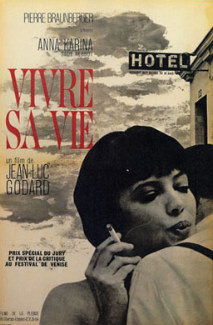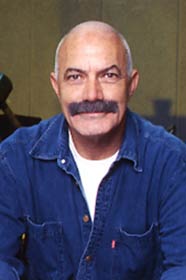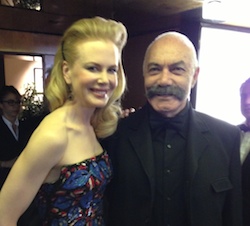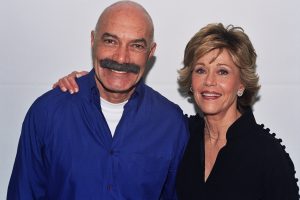Tribute to Jean-Luc Godard, seminal New Wave director, who died at 91.
In 1962, Jean-Luc Godard directed Vivre sa vie: film en douze tableaux (To Live Her Life: A Film in Twelve Scenes).
The film was released in the U.S. as My Life to Live and in the U.K. as It’s My Life.
Grade: A (***** out of *****)
| Vivre sa vie | |
|---|---|

Theatrical release poster
|
|
Godard is at his most strikingly minimalist with this stark, astringent, unsentimental black-and-white tale of the gradual decline and eventual demise of a young, liberated Parisian woman.
One of the director’s strongest collaborations with his then wife and muse Anna Karina, stylistically, the film is almost documentary-like in its style.

Quickly and cheaply made, the film was shot over the course of 4 weeks for only $40,000.
Structurally, the film is told through 12 “episodes” (chapters) each beginning with an intertitle.
Nana Kleinfrankenheim (Karina), a beautiful Parisian in her early 20s, leaves behind her husband Paul (André S. Labarthe) and infant son, hoping to become an actress. Before ending their marriage, the couple play pinball one last time.
The likeable Nana begins working in a record store, accommodating customers with their diverse musical tastes.
However, unable to make enough money to afford paying the rent, she asks coworkers to spare 2,000 francs but they all refuse. Things get worse, when her landlady refuses to let her in until she can pay the rent.
The next day, Nana meets Paul who gives her photos of her son and invites her to lunch, but Nana declines, claiming she has a movie date with another man. And indeed, they watch together Dreiser’s 1928 silent masterpiece, The Passion of Joan of Arc, which moves Nana to tears.
From that point on, Nana goes through a series of painful and humiliating experiences.
Nana ditches her date to meet a man who promised to take photos that would promote her future career as an actress. Asking her to undress for the shoot, Nana reluctantly complies.
Nana is questioned in a police station for trying to steal 1,000 francs from a woman. who dropped the money. She returns the money out of guilt, but the woman still presses charges against her.
Uncertain about her future, Nana walks down a street, noticing a prostitute. A man asks Nana if he can join her, assuming she is a prostitute, and she consents. He gives 5,000 francs and says she can keep the change. Nana is visibly uncomfortable, struggling to avoid his lips, when he kisses her.
Nana runs into her friend Yvette, and they go for lunch. Yvette talks about how her husband abandoned her and her children, and how she became a prostitute because it was the easiest way to make money. Yvette introduces her to her pimp, Raoul, who is at the diner.
Nana impresses Raoul and the trio start playing pinball when, suddenly, a police shootout occurs outside and a man who has been shot runs inside. After seeing the blood-covered man, Nana flees the diner.
Nana then writes a letter asking for work to an address Yvette gave her, describing her physical features.
Raoul tells Nana he thinks it would be better for her to stay in Paris, as she will make more money here. Nana agrees to work for him, thereupon quitting her job at the record store and lets go of her dream of becoming an actress.
In the next scene, Raoul explains the basics of being a prostitute: how to conduct herself, how much to charge, when and where to work, police and the law, getting unwanted pregnancy.
The dialogue between Nana and Raoul plays over scenes of Nana prostituting herself to different men, implying that she has absorbed the essential training for being a successful prostitute.
On Nana’s days off, Raoul takes her to meet his friends at a bistro, where she turns a pop song begins dancing. Most men seem indifferent to her, except for one man playing at a billiard table.
Back on the street, she picks up a client and takes him to nearby hotel. The man requests that other prostitutes join them, but he excludes Nana, and being helpless, she just sits on the bed waiting.
A seasoned prostitute, she does her best to fit in with the others, though she is brighter than them. In a cafe, she engages in a philosophical discussion with an older man sitting next to her. They talk–in a typical Godardian mode–about communication problems, language as an obstacle, and the impossibility of love.
Later on, Nana is in a hotel with the young man she’d met at the bistro, who reads a passage from Edgar Allan Poe’s poem, “The Oval Portrait.”
Based on their seemingly mutual admiration, Nana decides to live with him, and quit prostitution. However, she finds out that he was going to sell her to another pimp.
The last, devastating chapter depicts how the above transaction goes wrong, resulting in Nana getting killed in a pointless gun battle.
In the end, the pimps flee the scene, leaving Nana’s body lying on the pavement.
In Vivre sa vie Godard utilizes the cinéma vérité approach to documentary filmmaking, which was then in vogue. However, this film differs from others of the French New Wave by being photographed with heavy Mitchell camera, as opposed to the lightweight cameras. The brilliant cinematography is by Raoul Coutard, a frequent collaborator of Godard.
Influences, References, and Allusions
One of the film’s sources is a study of contemporary prostitution, Où en est la prostitution by Marcel Sacotte, a magistrate. The statistical results based on questionnaires are rendered by in voice-over by Godard himself.
Vivre sa vie was released shortly after Cahiers du cinéma (the famed magazine for which Godard wrote) published an issue devoted to Bertolt Brecht and his theory of ‘epic theatre.’ Godard may have been influenced by it as Vivre sa vie uses several distancng and alienation effects: twelve intertitles appear before the film’s ‘chapters’ explaining what will happen; jump cuts disrupt the usual flow of editing; characters are shot from behind when they are talking, and they are backlit; they address the camera directly.
Rich in literary and cinematic references, the film draws on the writings of Montaigne, Baudelaire, Emile Zola, Edgar Allan Poe, and the films of Robert Bresson, Jean Renoir, and Carl Dreyer.
It’s inspired by both Dreyer’s The Passion of Joan of Arc, which is seen playing in a theatre, and Renoir’s Émile Zola adaptation, Nana, whom the main character is named after.
Godard also makes allusions to popular culture. The melancholy young man who walks into a café and puts on a juke box disc is, in fact, the well-known singer-songwriter Jean Ferrat, who performs his own hit tune, “Ma Môme,” on the track.
Nana’s bobbed haircut is meant to replicate that of Louise Brooks in Pabst’s 1928 film Pandora’s Box, where the doomed heroine also falls into prostitution and violent death.
One sequence depicts a queue outside a Paris cinema waiting to see Jules et Jim, the 1962 film directed by François Truffaut, who was both a close friend and rival of Godard (they later had a falling out).
French critic Jean Douchet has written that Godard’s film “would have been impossible without Street of Shame, Mizoguchi’s last and most sublime film.”
Nana gets into earnest discussion with a philosopher (played by Brice Parain, Godard’s former philosophy tutor), about the limits of speech and written language.
In the next scene, the soundtrack stops and the images are overlaid by Godard’s personal narration. This formal playfulness is typical of the way the director would work with sounds and images
A timely (zeitgeist) film, Vivre sa vie depicts Paris’ rising consumerist culture; a shiny new world of cinemas, coffee bars, neon-lit pool halls, pop records, photographs, wall posters, pin-ups, pinball machines, juke boxes, foreign cars, the latest hairstyles, typewriters, advertising, gangsters and other elements of Americana.
Critical Status:
Commercial Appeal
Ironically, Godard’s earlier films (first decade) had much broader appeal than this he made in the rest of his long career. Vivre sa vie, like Breathless, was commercial: The film was the fourth most popular movie at the French box office in 1962.
Cast
Anna Karina as Nana Kleinfrankenheim
Sady Rebbot as Raoul (as Saddy Rebbot)
André S. Labarthe as Paul
Guylaine Schlumberger as Yvette (as G. Schlumberger)
Gérard Hoffman as Le chef
Monique Messine as Elisabeth
Paul Pavel as Journaliste
Dimitri Dineff as Dimitri
Peter Kassovitz as Le jeune homme
Eric Schlumberger as Luigi (as E. Schlumberger)
Brice Parain as Le philosophe
Henri Attal as Arthur (as Henri Atal)
Gilles Quéant as Premier client
Odile Geoffroy as La serveuse de café
Marcel Charton as L’agent de police
Credits:
Directed, written by Jean-Luc Godard
Produced by Pierre Braunberger
Cinematography Raoul Coutard
Edited by Godard, Agnès Guillemot
Music by Michel Legrand
Distributed by Panthéon Distribution
Release date: September 22, 1962 (France)
Running time: 85 minutes
Budget $40,000










